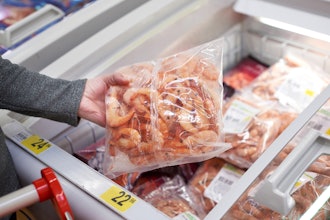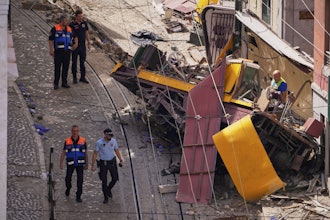
Manufacturing facilities, especially those that have production platforms with mixers for ingredients, often have to use every bit of available space for the various applications performed in the facility. Employees often work in these applications, so safety devices are a necessity, especially when the employees are working from height.
Chemical and food production facilities are often full of production platforms. Many of these plants have large reactors or mixers with hoppers accessed by elevated platforms positioned near the top of the vessels. Typically a lift truck loads pallets of ingredients onto these upper levels for employees to load into these mixers. Employees, often positioned near a ledge, must remove heavy bags from the pallet, slice them open and pour them into the large mixer.
The mixer is often located near the pallet drop area to limit the distance the employee has to travel with the heavy bag. A series of catwalks and small mezzanines around the mixer and the production machinery often complete the area. This limited space leaves very little room for employee, product, and proper fall protection guarding, which can expose employees to a high risk for incidents like falls.
While this application is fairly common, each manufacturing facility has its own unique space constraints. Regardless of the constraints, all pallet drop areas on elevated platforms need to be properly guarded for fall protection, but areas on production platforms where employees are asked to work around the ledge, often in a hostile environment, need to be taken seriously. This is often tiring, repetitive work in a dusty or wet environment so companies must take safety out of employee’s hands, and give them one less thing to think about during the day.
Due to the nature of applications that are typical of chemical or food manufacturing, securing the areas on which employees work can be challenging. That may be why fall protection safety is sometimes left to a piece of chain, which is not enough to keep employees safe or meet OSHA codes and ANSI standards. This is not a type of situation where you can ignore safety and at the same time, most standard solutions will not be the right fit, may pose hazards.
Here are four examples of applications in chemical and food manufacturing in which custom solutions are most often required to make sure employees have adequate fall protection.
No Room on the Platform
Due to the complexity of the the applications in the areas that needed to be secured in most processing facilities, there is often little room on the platform to accommodate a safety barrier. In these instances, custom designed safety gates are needed as they often need to be worked into the existing framework of the platform. For example, a custom designed safety gate may affix to the handrail instead of the walkway floor to provide dual-gate protection while taking up a minimum amount of space.
Rotating Pallets
When a pallet drop area includes a turntable that rotates 360 degrees, there are often additional challenges that make custom safety solutions a necessary choice. There may be hindrances such as low overhead, the traffic patterns of lift trucks and how the trucks enter the platform, or there may be infringements from a ramp or mixer that impact how a safety gate could be used. Custom safety gate designs should accommodate the pallets and drop area requirements; they must also ensure the applications and processes are not impacted while providing a safe work environment.
Blending Hoppers
Blending hoppers are often positioned close to a ledge so the employee can simply pick up the sack from the pallet, turn and dump the bag of ingredients into the hopper without carrying the bag. In these instances, there is usually limited depth which does not provide adequate room for a traditional dual-gate safety system. Safety gate systems that use gates that have rear-side gates that raise up and out of the way to allow access to the pallet while the ledge gate is closed are needed here. With this type of custom system in place, an employee can grab the bag around the pallet and dump it freely into the hopper while a barrier is in place at the ledge to prevent a fall.
Overhead Hoists and Vacuums
Many processing plants use overhead hoists to load and unload materials. In some operations, overhead hoists lift materials up to an elevated work platform instead of using a lift truck. This is the traditional method of lifting super sacks up to the processing platform where they can be dumped into hoppers. Other facilities may use a lift truck to elevate the material up to the platform, but then will use an overhead hoist to access the material once they are ready to work with the material. This is a common method of emptying drums of ingredients off of a pallet. Custom safety gates with no overhead components that would integrate with the overhead equipment are necessary in this case. The custom solutions can provide interconnected gates that close on one side while opening the other, preventing employee falls.
Aaron Conway is president of Mezzanine Safeti-Gates, Inc. a provider of dual-gate safety solutions for industrial facilities.























